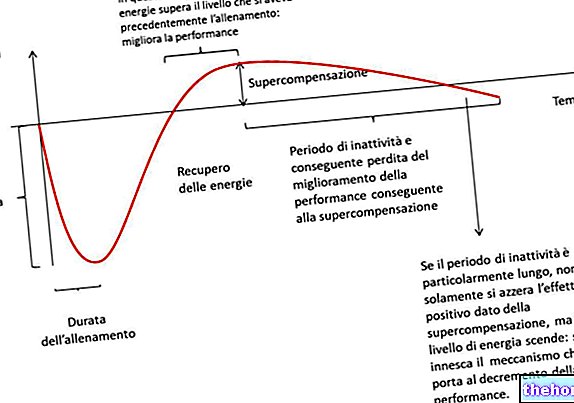The best exercise for training thighs and buttocks
The squat is probably the best exercise to tone and strengthen the muscles of the lower limbs. The simplicity of the movement is such that we do it, unconsciously, every time we sit and lift from a chair.

The correct execution of the squat requires a great synergy between numerous muscle groups, each of which relaxes and contracts in specific phases of the movement. This exercise also requires good joint mobility, often completely inadequate in sedentary or deconditioned people. Also for this reason the squat is often considered the main cause of injuries to the knees and lower back. Although the danger of suffering these unpleasant accidents is well founded, it is enough to take simple preventive measures to see it decrease significantly. After all, it is quite rare for a person to get injured while trying to get up from a chair!

A bit like medicines, the squat is therefore an extraordinarily effective exercise, which brings enormous benefits while having minimal side effects.
Learn the correct execution technique
It does not matter whether you are a bodybuilder, a dancer or simply a person who wants to keep fit, if you want to significantly improve the strength and tone of the lower limbs you must learn to perform this exercise in total safety!
Watch the video
- Watch the video on youtube
Remember that for a safer and more effective squat it is important to respect the following execution technique:
- place the barbell on the rack at a height of about ten centimeters lower than the shoulders
- grasp the rod with a slightly wider grip than the shoulders and with the palms facing forward
- pass with the head under the bar and bring the shoulders in contact with the shaft (central part of the trapezius), the shoulder blades must be kept adducted (squeeze the shoulders slightly)
- check with the aid of the mirror that the center of the barbell is positioned at the same distance from the two shoulders
- contract the abdominals and push with the legs upwards in order to detach the barbell from the supports
- slowly take a step backward approaching the safety devices (if any)
- place the heels at a width slightly greater than that of the shoulders, taking care to rotate the tips of the feet outwards by about 30 °
- move the pelvis back slightly, tensing the hamstrings; slowly bend the legs going down, without letting go but keeping the muscles in tension and avoiding lateral movements of the knees
- descend until the thighs are parallel to the ground or, if you prefer, until the hip joint is at the same height as that of the knee
- if your heels come off the ground during the descent or you feel serious balance problems, go back to the starting position and put the barbell back: you are not yet ready to perform the exercise
- during the movement, the back must be kept as straight as possible, avoiding arching it but being careful not to lean backwards
- shortly before reaching the position of maximum flexion, begin to slow down the movement more preparing yourself for the ascent
- reached this position push hard on the heels straightening the legs but without fully extending the knees
- during the ascent the thigh muscles must be actively contracted so that the lower limbs do not perform dangerous oscillatory movements.
- repeat several times
If you are not well trained and it is one of the first times you squat:
- rely on a qualified personal trainer to assist you during the execution of the movement
- if you have a swiss ball available compress it between the lower back and the wall trying to perform the exercise keeping the feet 20-30 cm more forward than the pelvis
- when you are ready, start the squat with natural load (without overloads), gradually moving on to the dumbbells and finally to the barbell
Squat video: Squat execution; Side squat Squat on swissball; Squat on one leg
Other articles on "The Squat"
- squat benefits
- squat execution
- squat tips
- Squats and injuries




























